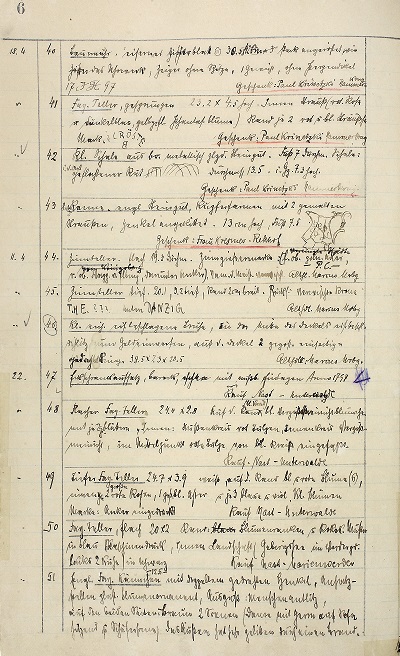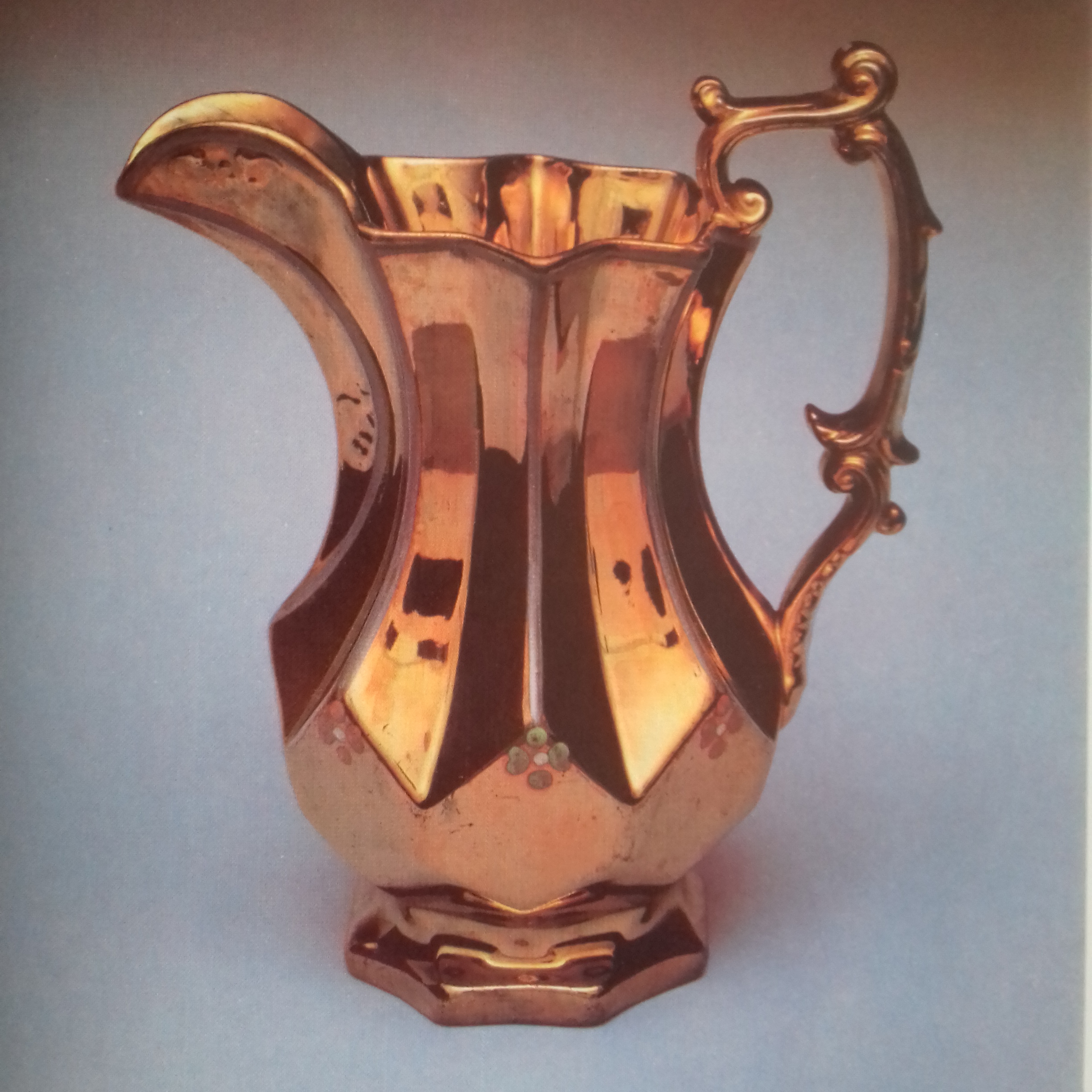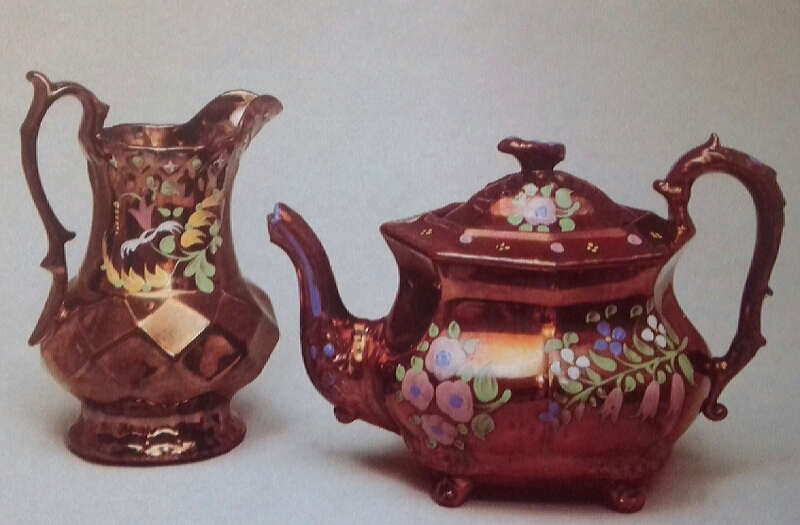Provenance: Great Britain, Staffordshire
Workshop: unknown
Delicate faience; bright, fine clay, die casting, manual processing, drying, traditional bisque firing, Copper Luster application, second reduction firing, enamel painting on the mirror surface, third final firing, traditional.
Mirror – metallic glaze created by firing without oxygen, the so-called reduction, at a temperature of approx. 800o C for products with surfaces covered with metal oxides, such as copper or silver.
Dimensions: height 13 cm, diameter of the foot 7.5 cm
On April 18, 1925, Mrs. Kre [s] mayor from Ryjewo (German: Rehhof) donated a golden Victorian jug to the collection of the Kwidzyn Regional Museum (fig. 1).
Tincture-type jug, with an octagonal, bevelled base and the same bevelled body, which turns into a wide funnel-shaped spout with an equally wide spout. The ear, made of three C-profiles, was attached to the place of the greatest extension of the belly and to the edge of the spout.
The body, whose wide, stubby belly is additionally chamfered in the shape of a basket, decorated with a golden mirror glaze and on it with two painted flower bouquets.
Dishes decorated with the technique of golden, silvery and pink mirror (German: Gold-pötte) glaze in the Victorian era, next to kitschy figurines of dogs and genre scenes, were considered fashionable, original, exclusive items and were purchased as gifts. They were produced in factories in Saffodshire, Liverpool, Swansea and Bristol in the years 1840-1870. They were shipped on a massive scale from the northern coast of England to European ports on the Baltic Sea, where they found numerous buyers among seafarers and their families in Mecklenburg, North Schleswig, Rügen, Denmark, Finland and even in distant Russia. Apart from the Germans and Scandinavians, the inhabitants of Gdańsk, Słupsk and especially Kashubians were the most willing to buy them. Kwidzyński, a lost copy of the golden jug, finds an analogy in the Mecklenburg collection (fig. 2). Mirror vessels from a tea set (Fig. 3) from Rewa (Puck district) in Kashubia (see Rudolph Wolfgang, Sailor Souvenirs. Stoneware, Faiences and Porcelain of three Centuries, Leipzig 1985, pp. 82–82) are similarly painted with enamels. 89, 94, Fig. 72, 78).
Bible: Inventar Heimat Museum Marienwerder 1925-1944, p. 6, pos. 43.
(compiled by Dr. B. Pospieszna)



